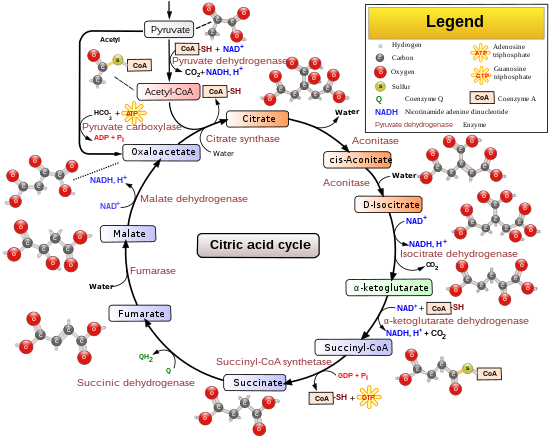Template:POTD/2022-08-25
Appearance
The citric acid cycle, also known as the TCA cycle (tricarboxylic acid cycle) or the Krebs cycle, is a series of chemical reactions to release stored energy through the oxidation of acetyl-CoA derived from carbohydrates, fats, and proteins. In addition, the cycle provides precursors of certain amino acids, as well as NADH, a reducing agent, which are used in numerous other reactions. Its central importance to many biochemical pathways suggests that it was one of the earliest components of metabolism and may have originated abiogenically. The German-born British biochemist Hans Krebs received the 1953 Nobel Prize in Physiology or Medicine for his identification of the cycle in 1937. The name of this metabolic pathway is derived from citric acid, which is consumed and then regenerated by this sequence of reactions to complete the cycle. The cycle consumes acetate (in the form of acetyl-CoA) and water, and reduces NAD+ to NADH, releasing carbon dioxide. The NADH generated by the cycle is fed into the oxidative phosphorylation (electron transport) pathway. The net result of these two closely linked pathways is the oxidation of nutrients to produce usable chemical energy in the form of adenosine triphosphate. These processes are depicted in this overview diagram of the citric acid cycle.Diagram credit: YassineMrabet; edited by Narayanese and TotoBaggins; vectorized by WikiUserPedia

